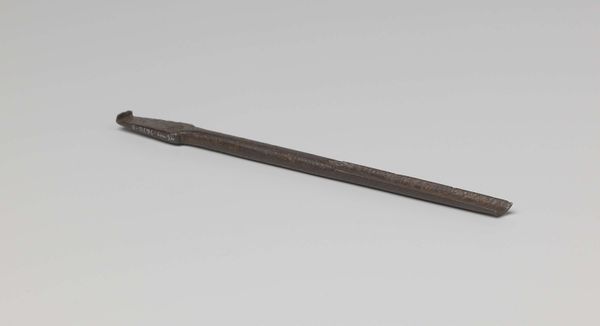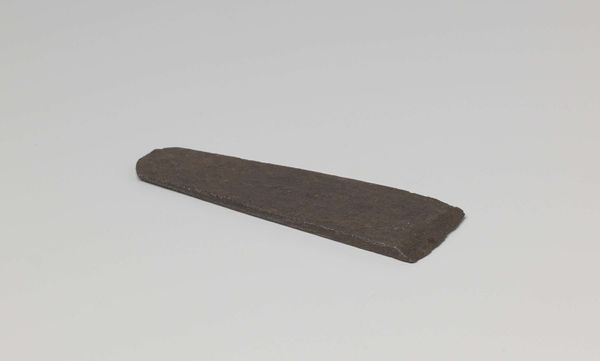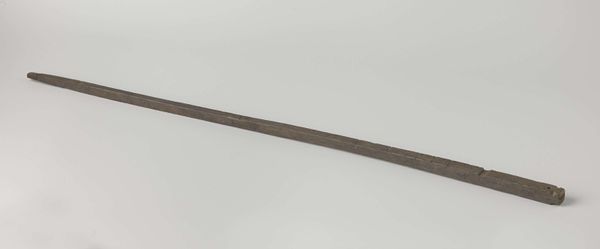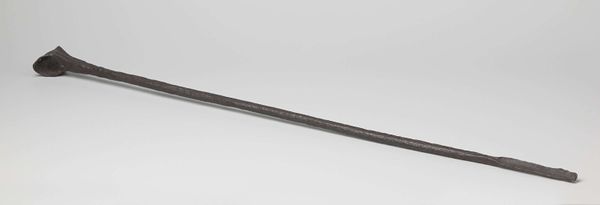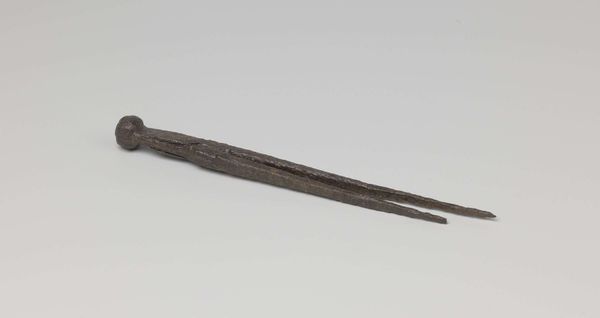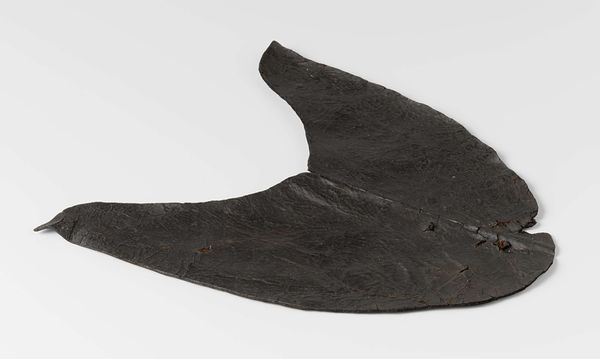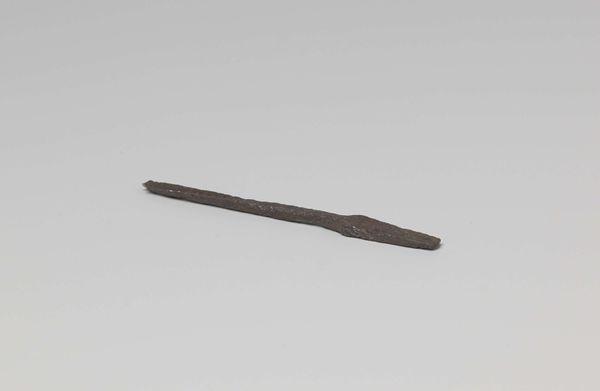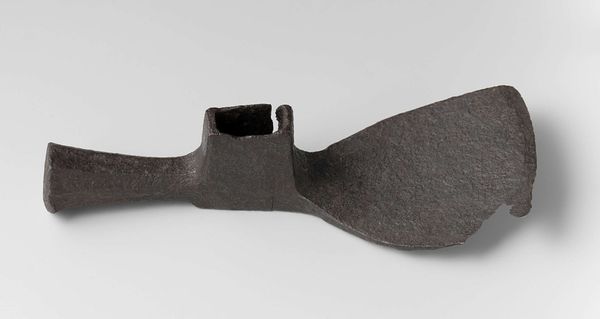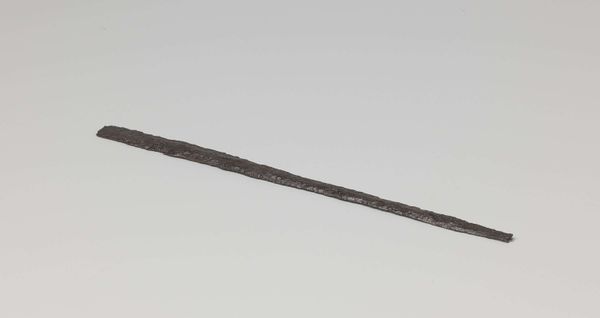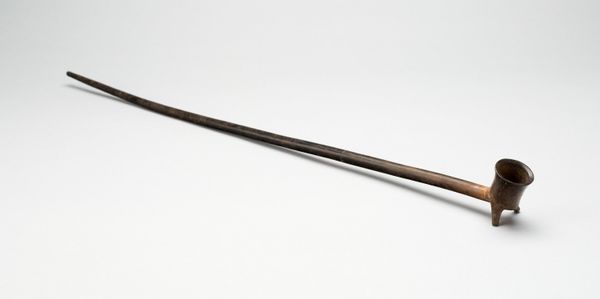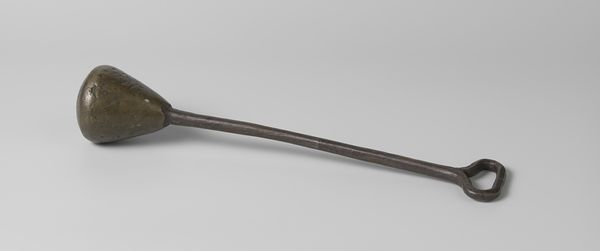
metal, sculpture
#
medieval
#
metal
#
form
#
geometric
#
sculpture
Dimensions: length 29.6 cm, width 2.8 cm, diameter 2.3 cm
Copyright: Rijks Museum: Open Domain
Editor: We’re looking at what’s titled "Iron axle or spindle of a grindstone" from around 1590-1596, created by an anonymous artist. It’s metalwork, currently housed at the Rijksmuseum. I am immediately struck by how rudimentary it looks – almost primal. It really speaks to the hand that shaped it. What do you see in this piece? Curator: This is an artifact whispering volumes, isn't it? Think of the grindstone, traditionally a communal object. This axle isn't merely functional; it’s a pivot point for labor, community, and the passage of time itself. Its roughhewn quality, a consequence of its age and function, invites contemplation on the endurance of basic human needs and ingenuity. Consider how essential a sharp blade was, shaping not just wood or metal, but also lives and livelihoods. Does it evoke any particular associations or stories for you? Editor: I guess I hadn't considered that connection. It does make me think of simple living and basic tasks like preparing food or tools - something very grounding, actually. Could the shape have any symbolic relevance? Curator: Absolutely. Notice the subtle taper and slight undulations. Form follows function, certainly, but even here, in this apparently simple form, we find echoes of earlier religious and agricultural symbolism: a suggestion of growth, perhaps, of cycles, maybe even fertility. Imagine the rhythms imposed by turning the grindstone. How does this relate to repetitive actions in your daily existence? Editor: I see what you mean, how actions get repeated in the lives of so many people throughout time. That simple form now seems a lot richer. Thank you! Curator: And thank you, your fresh perspective helped to further illuminate those cultural reverberations.
Comments
No comments
Be the first to comment and join the conversation on the ultimate creative platform.
